Ever since Performance Max campaigns came out, advertisers had been asking Google for a way to add negative keywords.
Google said to wait because they were cooking up something.
And Brand Lists are the result of that.
The interesting thing is that the application of Brand lists is not just limited to Performance Max campaigns not.
So in this article, we’ll look at how brand lists power brand inclusions (restrictions), and brand exclusions.
Table of Contents
What Are Brand Lists in Google Ads?
Brand Lists are a new feature inside of Google Ads that allows you to create, well, lists of brands 🙂
It uses the index Google has of all the different brands. When I’m searching for the Athletic Greens brand, it also shows me related brands like the Bowling Green Athletic Club:
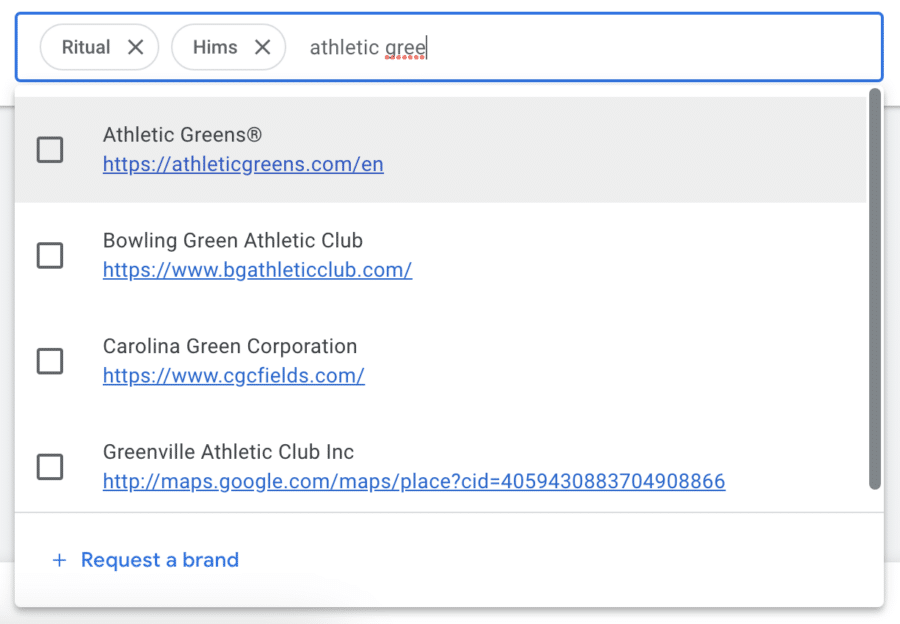
After you’ve created a new list, you can then use it in your campaigns to target or prevent your campaigns from showing up for search queries related to the brands.
Here is how it works:
- Brand exclusions prevent your Performance Max campaigns from showing up for these brands
- Brand inclusions (formerly known as brand restrictions): make sure your broad match keywords in Search campaigns focus on these brands
If you want to add a brand that’s not included yet, you can click “Request a brand” to add a new one. As more advertisers complete their lists of brands, I assume that this list will grow over time.
Brand Lists vs Negative Keywords
At this point you might wonder about the differences between Brand Lists and negative keyword lists.
Here is what Google is saying:
One benefit of using brand lists instead of keywords is not having to enter misspellings, variants, or versions in multiple languages.
In short: it should cover different variations and misspellings. This would be a step up in trying to nail the exact match types that exclude or include a particular phrase.
Performance Max Brand Exclusions
As I mentioned before, Brand Lists were created to give advertisers a way to exclude brands from pMax, one of the Performance Max best practices.
Especially if a big part of your clicks or revenue is coming from branded searches within Performance Max, I like to exclude it from my campaign. That will lead to a drop in performance and ROAS, but it will give you a much better look at the actual incrementally of your campaign.
So if you want to know how to exclude branded terms from Performance Max, Brand exclusions are the easiest way.
Go to the settings of your Performance Max campaign, and find the section called Brand exclusions. This will allow you to add your brand exclusion list:
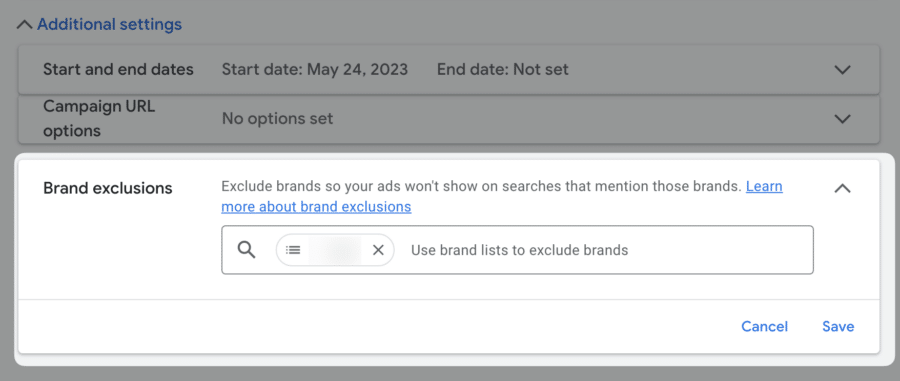
If you don’t have any brand lists listed, check further in this article how you can create a brand list to exclude branded searches.
Using Brand inclusions
Brand lists also have a second application in Search campaigns.
You can use the Brand inclusions (this used to be known as brand restrictions when it first came out) setting to limit searches to the brands that you’ve provided in your list.
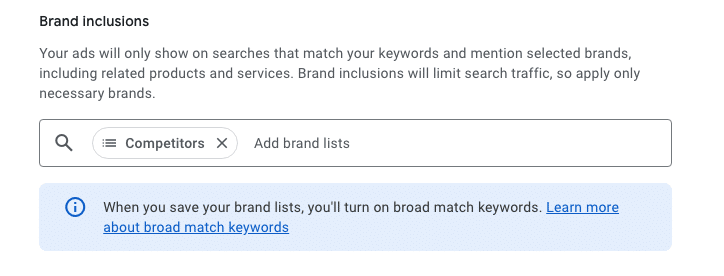
There are a few requirements to use this feature:
- The campaign needs to use a conversion or conversion value-based bidding strategy
- Use broad match keywords
If you’re not using broad match keywords and want to use Brand restrictions, you’ll see the following modal pop-up:
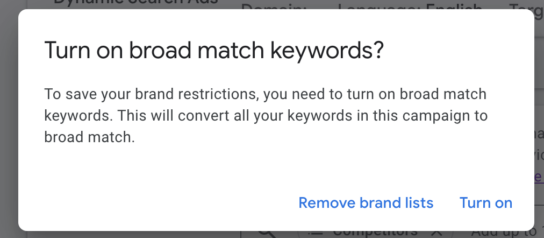
This will convert all your keywords to broad match, so it’s a pretty intense change 😬
How To Create a New Brand List in Google Ads
To get started with brand lists, you can create a list from the settings of a pMax or Search campaign, or in your accounts Shared Library.
So go to “Tools.” There, you click on “Shared library” in the drop-down menu and click on “Brand lists.”
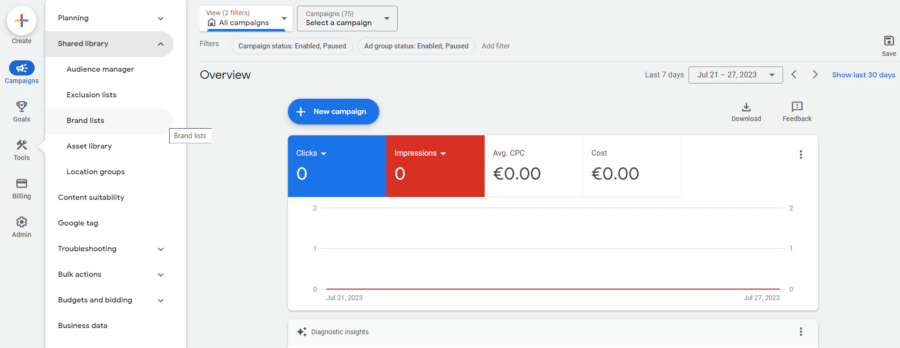
Once you’re there, you can choose a name for your list. (Use a descriptive name so it’s easy to understand which brands are included in this list)
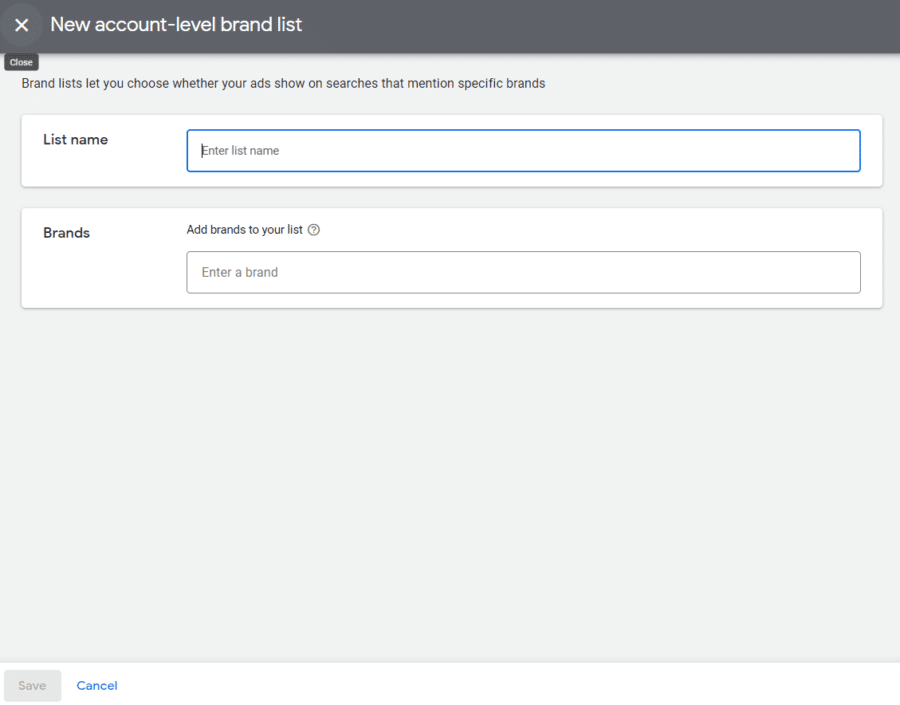
Click on the “Save” button, and voila, your list is ready to use in a campaign.
Did you know?
I have a full course for everything you need to know about Performance Max campaigns? My pMax course consists of 16 educational videos on Performance Max, and it’s the perfect asset for freelancers running ad campaigns in Google Ads for their clients and ecommerce businesses.
Recap
Brand lists are a pretty new feature.
The application for Performance Max is pretty straightforward and will be welcomed by advertisers that want to exclude brands from their campaigns.
But the application of using Brand lists as Brand restrictions is a pretty new development. Time will if and how exactly this can be used!
